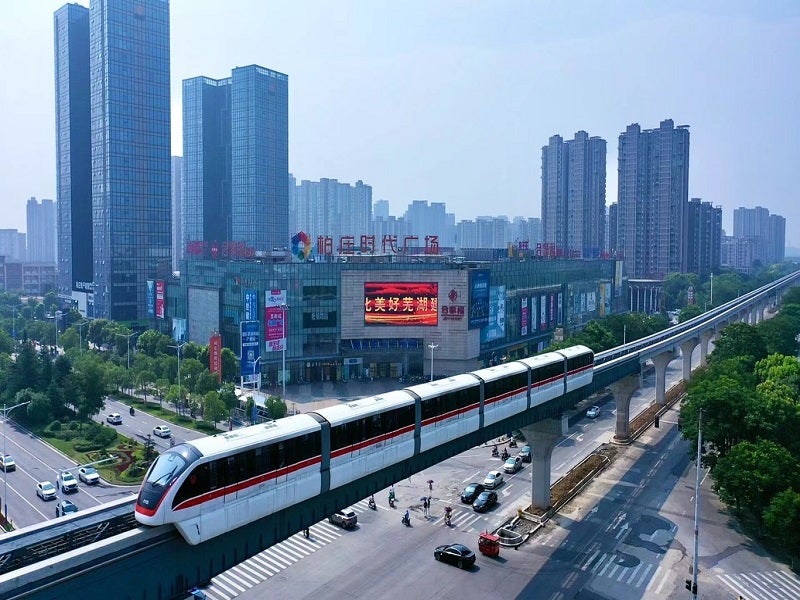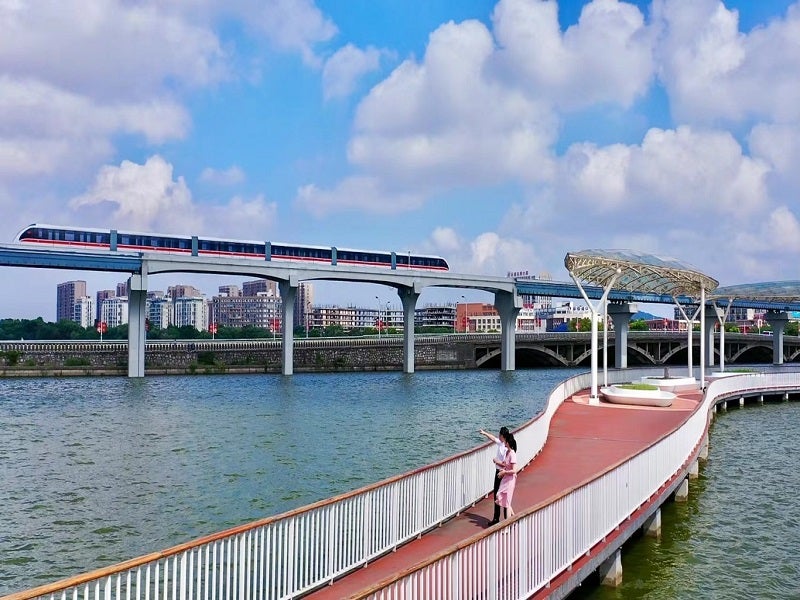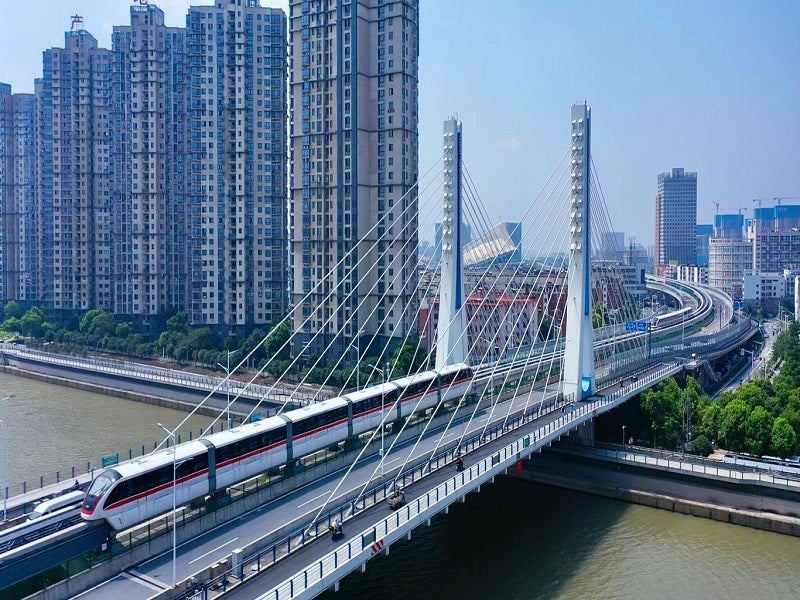The Wuhu rail transit is a monorail rapid transit system currently under construction in Anhui Province, East China. It is the first cross-block urban rail transit system in China and will serve as a model for future rail transit development in the country.
Claimed to be the largest single public-private partnership (PPP) project in the Anhui Province, the project will have a total length of 46.7km.
The first two lines of the new monorail system are expected to be a vital component of the city’s public rail transportation system. Construction of line 1 was commenced in 2017 while the line entered service in November 2021.
The new driverless elevated monorail will provide Wuhu with an environmentally friendly transportation solution. It is expected to reduce travel times and carbon emissions in the city.
Wuhu Rail Transit lines and routes
The Wuhu monorail line 1 is the first fully automated and driverless elevated monorail system in China. It has a total length of approximately 30.48km, comprising 50m of underground and 30.43km of ground and overhead sections.
The line runs from Baimashan Station in the south to Baoshun Road station in the north. It includes 25 elevated stations, of which three are transfer stations.
The transfer stations are Beijing Road Station, Yijiang Station, and Baima Mountain Station. An intersection with line 2 is installed at Beijing Road Station.
The 15.73km-long monorail line 2 will have 11 stations, including ten elevated, one underground, and three transfer stations, in the first phase. Interchanges will be located at Beijing Road Station, Yijiang Road Station, and Government Affairs Center Station. The second phase of line 2 is being planned to extend the line to Jiangbei Railway Station.
The maximum distance between any two stations along the first phase of line 2 will be 3.07km while the minimum spacing will be 0.81km. The average station spacing of the line will be 1.58km.
The Wuhu monorail transit system will have 44 stations in total.
Rolling stock for Wuhu rail transit project
Wuhu line 1 is served by 28 six-car Innovia monorail trains, while line 2 will be served by 18 four-car Innovia monorail trains in its first phase.
The new elevated monorail on Wuhu line 1 operates at a maximum speed of 80km/h. The trains are equipped with Grade-of-Automation 4 (GoA4) automatic train operation (ATO), which enables the trains to operate driverless and without an attendant.
The Innovia trains are fully integrated with track beams, switches, and associated equipment such as power supply rails to enhance efficiency and safety.
The passenger cabin is designed to provide a clear and open view of the city. The trains are suitable for urban transportation due to superior climbing capabilities and a tight turning radius.
Contractors involved
CEC was awarded a general contract worth CNY182.2m ($28.16m) for the design and survey work for the Wuhu monorail lines 1 and 2 in March 2016.
Chinese railway construction services company CTCE Group is responsible for the construction of the Wuhu rail transit project.
CRRC Puzhen Bombardier Transportation Systems (PBTS), a joint venture (JV) between multi-national rolling stock company Alstom’s subsidiary Bombardier and CRRC Nanjing Puzhen, was awarded a contract worth CNY1.78bn ($270m) to provide Bombardier’s Innovia Monorail 300 platform along with a total of 240 cars in December 2017.
PBTS was also contracted to provide maintenance services for the 240-car monorail fleet of the Wuhu monorail transit system in June 2021.
Bombardier NUG Signalling Solutions (BNS), a 50%-owned subsidiary of Alstom, provided the Cityflo 650 signalling system, which enables automated operation of the trains while Bombardier NUG Propulsion System (BNP) supplied the Mitrac propulsion system for the trains.










